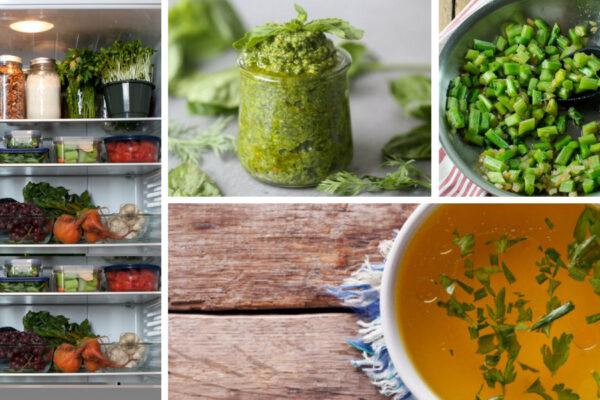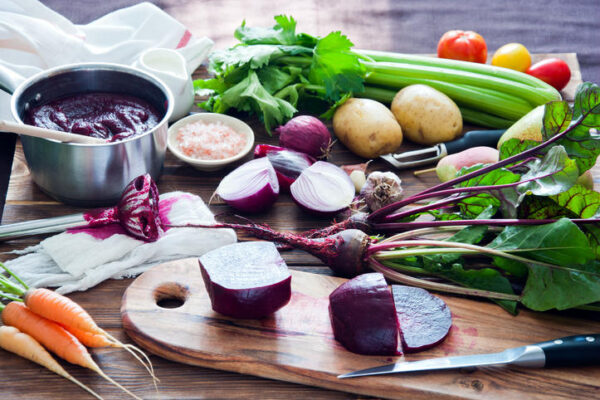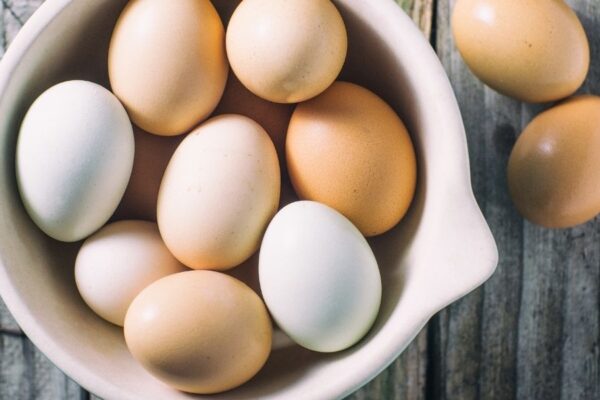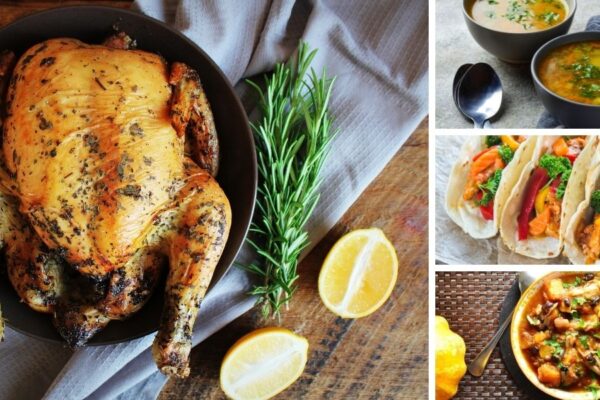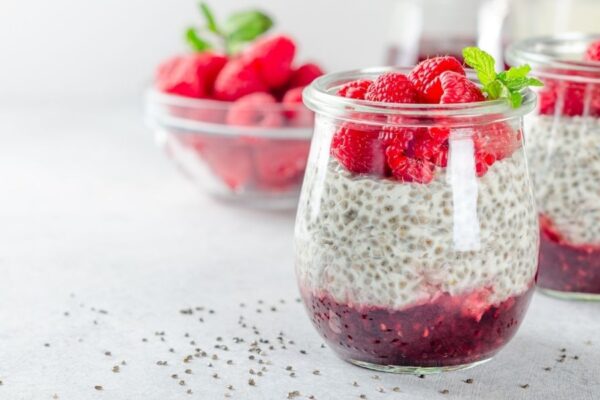Culinary Nutrition Guide to Healthy Cookware
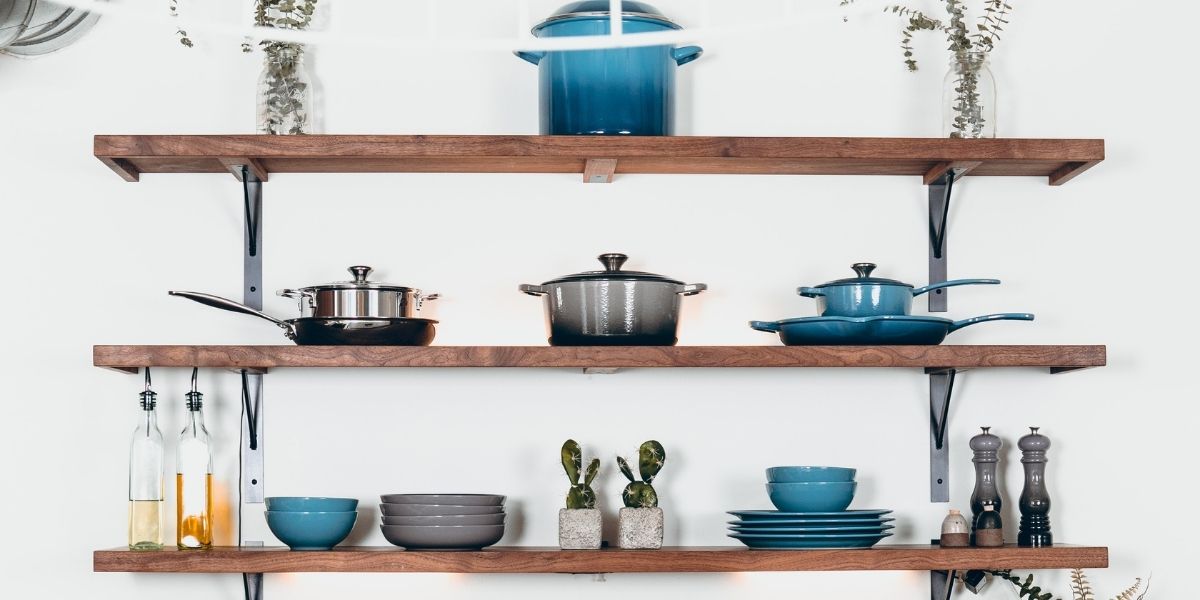
Home cooks often like to spend their time considering what to eat, searching for mouthwatering recipes, visiting grocery stores and markets, prepping meals, and, of course, eating. What we eat undeniably supports our optimal health – but the tools we use to cook our food play a role, too! Here at the Academy of Culinary Nutrition, we also teach our Culinary Nutrition Expert Program students about healthy cookware, and how to choose between the multitude of options when shopping for cookware.
Why Do We Need to Care About Our Cookware?
Many materials that companies use to formulate cookware aren’t inert. They release compounds that interfere with our health and can have negative consequences.
Non-Stick Cookware
The cookware we are most concerned about is the non-stick cookware, such as Teflon. Polytetrafluoroethylene (PFTE) and perfluorooctanoic acid (PFOA) are chemicals found in Teflon and other non-stick pots and pans. These chemicals can be released into our food (especially if the pans get scratched) and inhaled as we cook. They are potential cancer-causing substances, can disrupt thyroid function, may give you flu-like symptoms, and can even be found in human breastmilk.
PFTE and PFOA are part of a family of chemicals called ‘per and polyfluoroalkyl substances’ (PFAS). Unfortunately, PFAS are found widely in the environment, including soil, water, food packaging, animals, and humans – one study of humans blood samples found PFAS in 98% of those tested. These chemicals accumulate in the environment and they don’t safely dissipate.
Aluminum Cookware
Aluminum cookware is popular for conducting heat quickly, but evidence indicates aluminum can leach into our food as we cook – and this migration accelerates when we use acidic foods like tomatoes and citrus. Excess amounts of aluminum in the body have been linked to neurological diseases like Alzheimer’s, dementia, Parkinson’s, and multiple sclerosis. Additional studies found aluminum can leach other metals like lead, cadmium, and arsenic.
You can also find anodized and hard-anodized aluminum cookware. During the anodizing process, manufacturers use acid and an electric current to create a layer of aluminum oxide on the surface of pots and pans. This layer is thick and doesn’t peel or chip. Hard anodized aluminum cookware is a safer option than regular aluminum.
Copper Cookware
Copper cookware is certainly beautiful to look at and like aluminum, it conducts heat well. Unfortunately, copper can migrate into our food from the pans and accumulation of it can cause a burden on the liver and brain, gastrointestinal symptoms, and damage to our DNA. Most copper pots and pans on the market are lined with stainless steel, tin, nickel, or a non-stick coating. Copper pots lined with stainless steel are a safer option than the other coatings that may scratch off. If you have old copper pots passed down from elderly relatives, it’s best to use them for decoration only.
With all of the better options out there, hard-anodized aluminum and copper aren’t our first choices.
Culinary Nutrition Guide to Healthy Cookware
In no particular order, these are our favourite types of healthy cookware to consider.
Stainless Steel Cookware
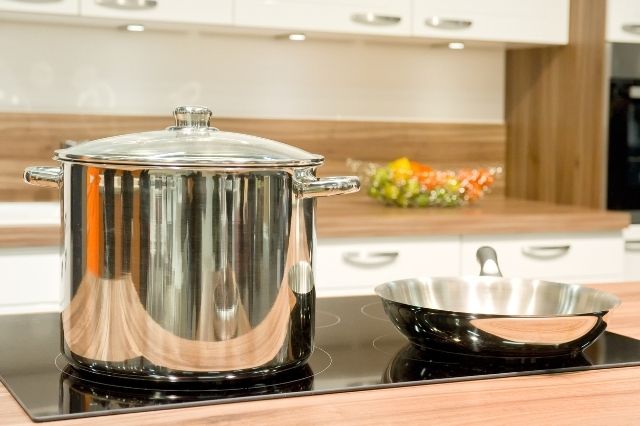
Pros
- Widely available
- Durable
- Affordable
- Free of PFTE and PFOA
- Doesn’t strongly react with foods
- Easy to use and clean
- Relatively lightweight
Cons
- Isn’t non-stick, so stainless steel isn’t ideal for recipes like pancakes, omelettes, crepes, etc.
- Stainless steel is made from iron and carbon, with small amounts of chromium and nickel. When you see the numbers stamped on stainless like 18/8, that means the pot or pan has 18% chromium and 8% nickel. This isn’t a problem for most people unless they have a nickel allergy.
Brand We Recommend
- Canada/US: 360 Cookware
Cast Iron Cookware
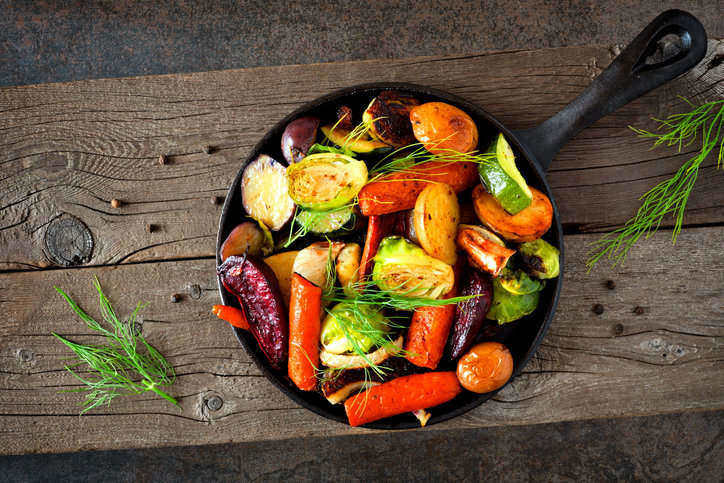
Pros
- Durable
- Affordable
- Able to retain heat well and handle high heat
- Free of PFTE and PFOA
- Easy to transition from stovetop to oven to table (they’re great for one-pot meals!)
- Simple to clean and season
- May help reduce iron deficiency anemia in adults and children
We have a full guide to using cast iron for you to check out!
Cons
- Very heavy
- Are a source of iron, so you’ll want to be mindful if you aren’t iron deficient (and acidic foods will cause more iron to leach from the pan)
- You need to season them regularly so they work more effectively
- Susceptible to rust if not cared for properly
Brand We Recommend
Enameled Cast Iron Cookware
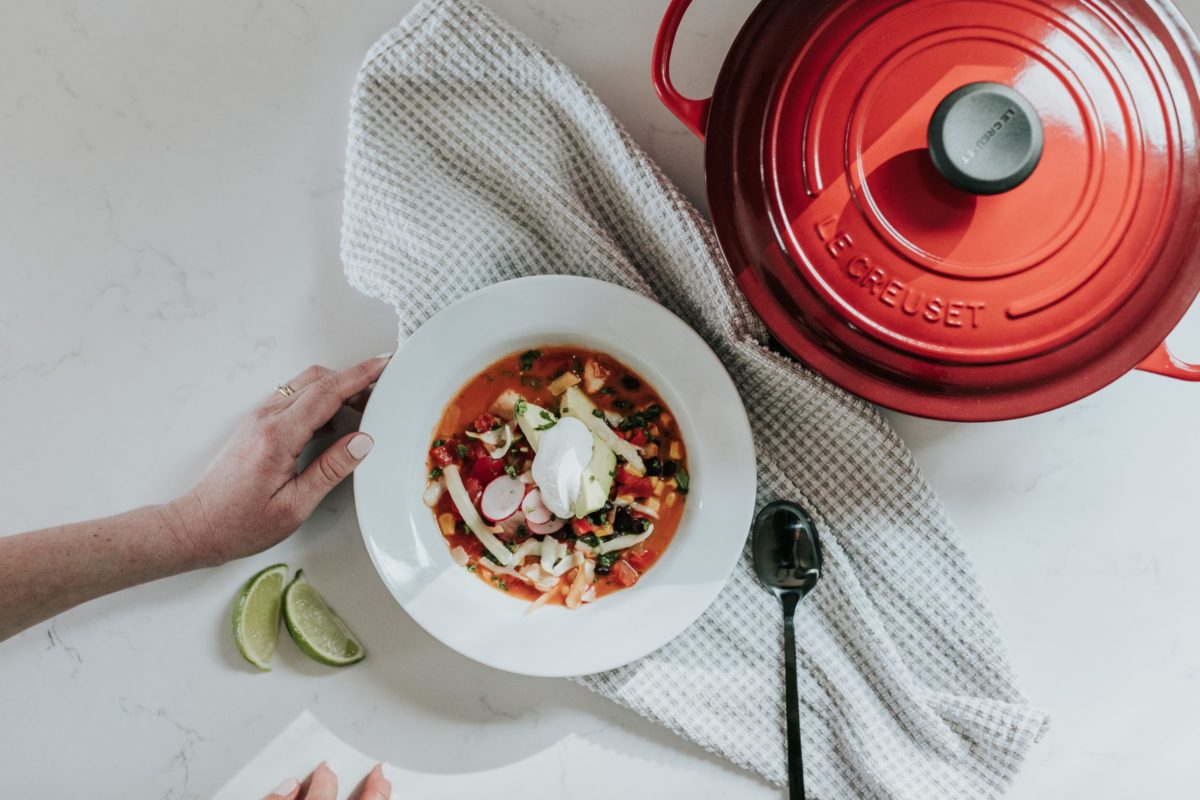
Photo: Becca Tapert on Unsplash
Enameled cast iron has a powder glass coating fired into it.
Pros
- Free of PFTE and PFOA
- Naturally non-stick (doesn’t require seasoning)
- Easy to clean
- Won’t leach any chemicals, and is non-reactive to foods
- Retains heat well
- Doesn’t rust
- Durable and long-lasting
Cons
- Expensive
- Heavy
- May chip
- Not quite as non-stick as a well-seasoned cast iron pan
Brand We Recommend
- Canada: Le Creuset
- US: Le Creuset
100% Ceramic Cookware
Note: if looking at this option, ensure you are purchasing 100% ceramic. There are ceramic-coated cookware brands that use non-stick coatings and glazes containing heavy metals like lead. Ceramic-coated is not the same as 100% ceramic.
Pros
- Free of PFTE and PFOA
- Easy to clean
- Non-reactive
- No heavy metals
- Doesn’t leach anything into your food, nor peel
- Conducts heat evenly
- Can be used on the stovetop and in the oven as well as for storage in the fridge or freezer
Cons
- Isn’t non-stick
- Doesn’t work on induction stovetops (because it has no metal)
- Is sensitive to extreme temperature changes (for example, it may crack if you add a frozen item to a hot pan)
- Metal utensils will leave marks on it
- Can be pricy
Brand We Recommend
- Canada/US: Xtrema
Glass Cookware
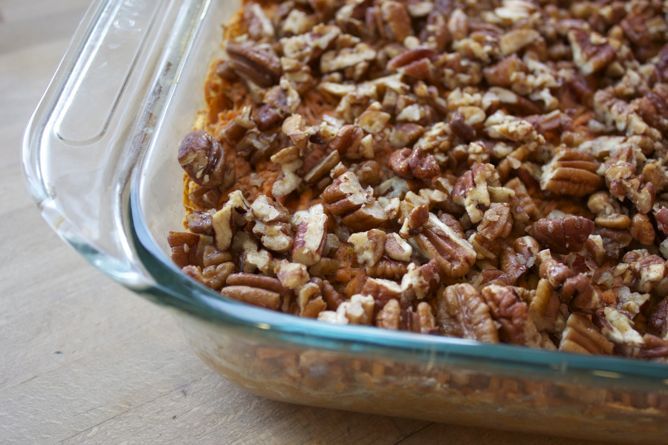
Pros
- Affordable
- Widely available
- Free of PFTE and PFOA
- Won’t leach chemicals into your food
- Oven and dishwasher safe
Cons
- Can break, chip, or crack
- Is sensitive to temperature changes (which may cause it to shatter)
- Doesn’t retain heat
Brand We Recommend
A Few More Recommendations
After further research and investigation, there are a couple of ceramic brands with safer non-stick coatings to consider:
What About Silicone Bakeware?
Silicone mats, loaf pans, muffin cups, and molds are popular for baking, as are silicone utensils. Here in North America, where the Academy of Culinary Nutrition is located, silicone bakeware is generally recognized as safe up to temperatures of 425 degrees. However, while there isn’t specific evidence that shows silicone is dangerous, there also isn’t evidence that proves it’s safe. For this reason, we recommend only using silicone if you’re not going to heat it. We like to use silicone molds for recipes like chocolate and other no-bake treats, freezing excess herbs in olive oil, freezing nut/seed milk cubes or sauce cubes, etc.
How Many Pots and Pans Do You Need?
Healthy cookware can be an investment if you are equipping an entirely new kitchen or making non-toxic swaps for what you already have. However, in our view, you don’t need to buy pricey 12-piece sets to cook nutritious food. One of the first lessons we teach in the Culinary Nutrition Expert Program is how to set up and organize your kitchen, including how many pots and pans to have.
To cook and eat well, this is what we suggest you start with:
- 1 small pot
- 1 medium to large pot
- 1 skillet/frying pan
The sizes of pots and pans you purchase will depend on how many people you cook for (you may want small sized cookware if you’re cooking for one, and larger pots for families or batch cooking). Other nice-to-haves include a dutch oven or casserole, and a large rectangular or square shallow dish.
Another thing to consider when shopping for cookware is the types of food you like to eat! If you enjoy making soups, stews, and one-pot meals, investing in a few good-sized pots will serve you well. If you like to cook food that involves more pan-frying, opt for a second skillet or frying pan.
If you are working with a tight budget, check out thrift stores for healthy cookware choices – just ensure you check the materials and look into the brand and how they construct their pans to ensure safety. You can also raid kitchens of your family members for healthy cookware they never use!
You’ll use the pots and pans you purchase on a regular basis, whether it’s daily, multiple times a day, or a few times a week. Remember, the quality of healthy cookware options will have a direct impact on your food and your overall health. This means they’re worth the investment and durable pieces can be passed on to generations of friends and family.
* This post contains affiliate links
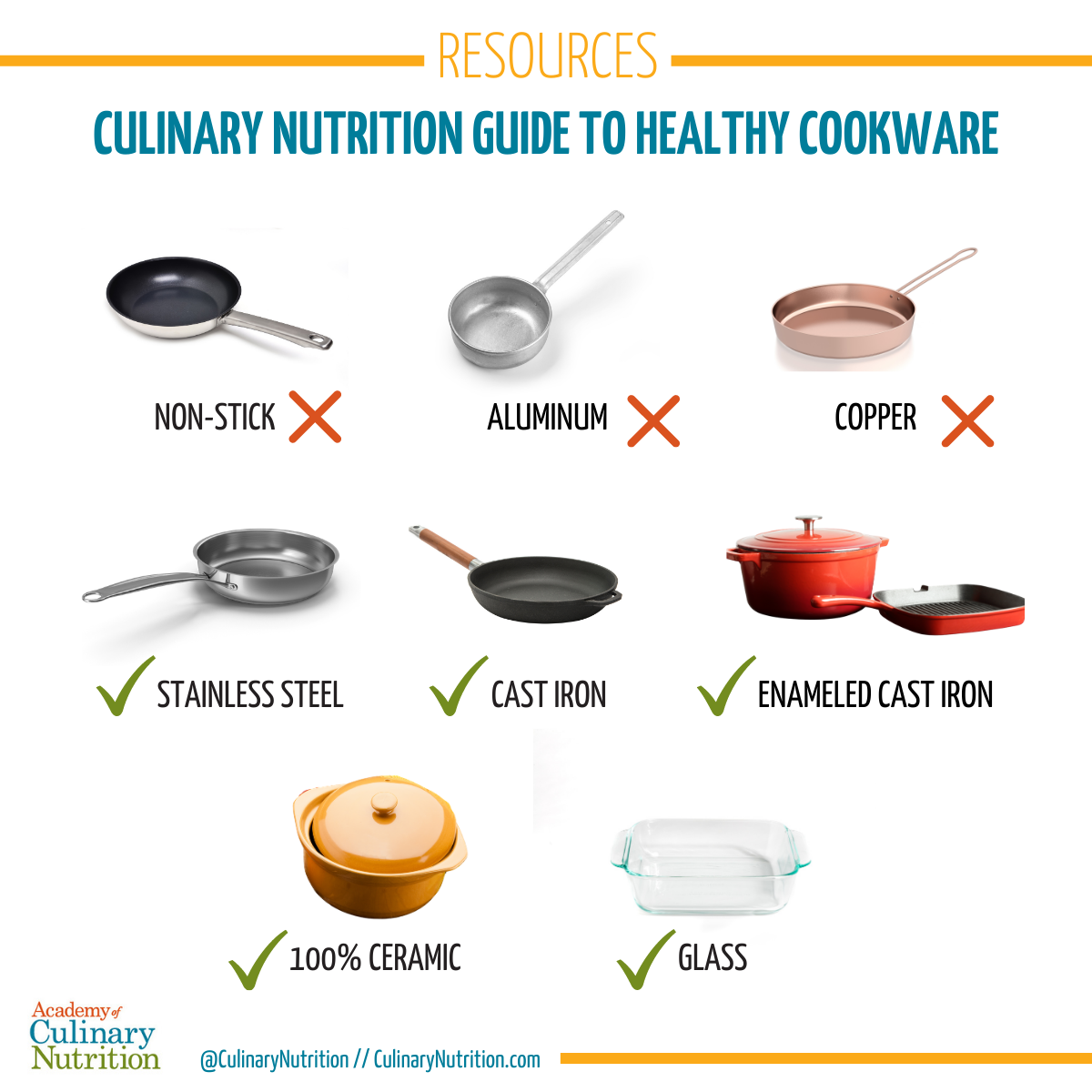
Free Resource Library
Enjoy more than 40 downloadable guides, recipes, and resources.















